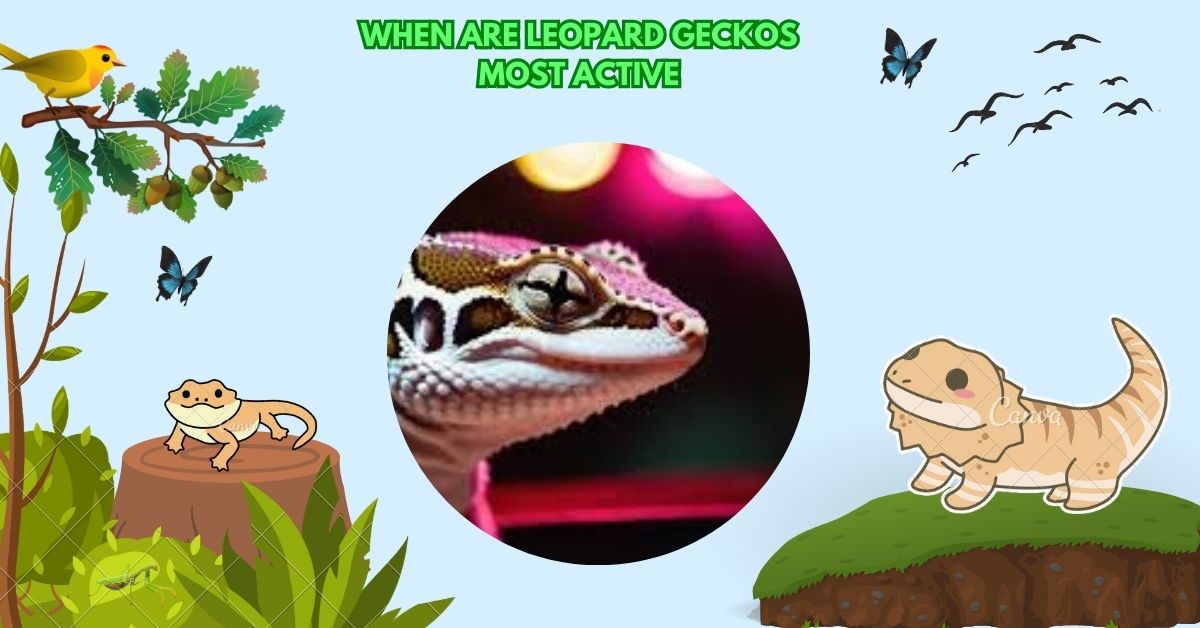Leopard geckos (Eublepharis macularius) are among the most popular pet reptiles, cherished for their docile nature, striking appearance, and relatively straightforward care requirements.
Leopard geckos live 10-20 years in captivity with proper care. Males often reach 20 years, females around 15. In the wild, their lifespan is 6-10 years due to harsher conditions.
This article explores the lifespan of leopard geckos, both in the wild and in captivity, and provides detailed guidance on how to maximize their lifespan through proper care.
Lifespan in the Wild vs. Captivity
In the Wild
In their natural habitat, leopard geckos face numerous challenges that significantly shorten their lifespan compared to their captive counterparts. Wild leopard geckos typically live between 6 and 8 years, though some sources suggest they may reach up to 10 years under optimal conditions. Several factors contribute to this relatively short lifespan:
- Predation: Leopard geckos are prey for a variety of predators, including birds, snakes, scorpions, jackals, and even spiders. Their primary defense mechanism, tail dropping (caudal autotomy), allows them to escape predators but comes at a high energy cost, as regrowing the tail takes weeks and depletes fat reserves.
- Harsh Environmental Conditions: The desert regions they inhabit experience extreme temperature fluctuations, droughts, and limited food availability. These conditions make it difficult for geckos to maintain consistent nutrition and hydration, impacting their health and longevity.
- Parasites and Disease: Wild geckos are exposed to parasites from consuming wild insects, which can lead to health issues like malnutrition or infections. Without access to veterinary care, these conditions often prove fatal.
- Stress: Constant threats from predators and environmental stressors contribute to higher stress levels, which can weaken their immune systems and shorten their lives.
In Captivity

In contrast, leopard geckos in captivity can live significantly longer, with an average lifespan of 10 to 20 years. With exceptional care, some individuals have been reported to live into their late 20s or even early 30s, with unconfirmed claims of geckos reaching 38 or 40 years.
The oldest documented leopard gecko lived to 28.5 years, a male in captivity, highlighting the potential for longevity with proper care. Several factors contribute to this extended lifespan:
- Controlled Environment: Captive geckos live in carefully regulated enclosures where temperature, humidity, and lighting are optimized, reducing stress and health risks.
- Protection from Predators: In captivity, leopard geckos are safe from predators, eliminating a major cause of mortality in the wild.
- Nutritious Diet: Pet geckos are fed high-quality, captive-bred insects like crickets, mealworms, and waxworms, often supplemented with calcium and vitamins to prevent deficiencies.
- Veterinary Care: Access to exotic animal veterinarians allows for early detection and treatment of health issues, further extending lifespan.
- Reduced Stress: Controlled environments and consistent care routines minimize stress, promoting overall health.
Factors Influencing Leopard Gecko Lifespan
Several controllable and uncontrollable factors influence how long a leopard gecko lives, particularly in captivity. Understanding these factors is crucial for pet owners aiming to maximize their gecko’s lifespan.
Gender
Male leopard geckos generally live longer than females, with males averaging 15 to 20 years and females 10 to 15 years. This difference is primarily due to the energy and stress associated with egg production in females, even in the absence of breeding. Female geckos may lay infertile eggs, which depletes their energy reserves and can lead to health issues like calcium deficiency or egg-binding.
Genetics
Genetics play a significant role in a leopard gecko’s lifespan. Geckos from reputable breeders with strong genetic lines are less likely to have health issues.
Certain morphs, such as the Enigma morph, are prone to neurological problems like seizures, which can shorten lifespan. Choosing a gecko from a breeder focused on health rather than exotic morphs is critical.
Diet and Nutrition

A well-balanced diet is essential for a leopard gecko’s health and longevity. Leopard geckos are insectivores, primarily eating live insects such as:
- Crickets
- Mealworms
- Waxworms
- Small locusts
- Hornworms
To ensure proper nutrition, insects should be gut-loaded (fed nutritious foods before being offered to the gecko) and dusted with calcium and vitamin D3 supplements 2-3 times per week.
Calcium supplementation is crucial to prevent metabolic bone disease (MBD), a common condition that weakens bones and can lead to fractures or death. Leopard geckos cannot digest fruits or vegetables, so these should not be offered. Overfeeding or feeding inappropriate foods, such as wild-caught insects exposed to pesticides, can lead to health issues like obesity or toxicity.
Enclosure and Environment
A properly set-up enclosure is vital for a leopard gecko’s well-being. Key environmental factors include:
- Tank Size: A 20-gallon tank is suitable for juveniles, while adults thrive in 40-50 gallon enclosures. Larger tanks provide more space for enrichment and reduce stress.
- Temperature: Leopard geckos require a thermal gradient with a warm side (90-95°F) for digestion and a cool side (75-80°F) for rest. Use a thermostat-controlled heat source, such as an under-tank heater or ceramic heat emitter, to maintain stable temperatures.
- Humidity: Maintain humidity at 30-40%, with a humid hide (containing damp moss) to aid shedding. Poor shedding can lead to complications, such as toe loss.
- Substrate: Use safe substrates like reptile carpet or paper towels to avoid impaction from ingesting loose substrates like sand.
- Enrichment: Provide hiding spots, logs, and low climbing structures to mimic their natural habitat and reduce stress.
- Lighting: While UVB lighting is not strictly necessary, a 2.5% UVB bulb for 10-12 hours daily can support bone health and prevent MBD.
Health and Veterinary Care
Regular health monitoring and veterinary care are essential. Common health issues include:
- Metabolic Bone Disease (MBD): Caused by calcium or vitamin D3 deficiency, leading to weak bones and fractures.
- Respiratory Infections: Often due to improper temperature or humidity.
- Impaction: Caused by ingesting substrate or overfeeding.
- Shedding Issues: Stuck shed can restrict blood flow, particularly to toes or eyes, requiring veterinary intervention.
Annual veterinary check-ups, including fecal parasite testing and bloodwork, can catch issues early. Signs of a healthy gecko include clear eyes, a plump tail, and regular shedding.
Stress Management
Leopard geckos are solitary and should not be housed together except for breeding, as cohabitation can lead to territorial disputes and stress. Handle geckos gently, supporting all four legs and avoiding the tail, which can drop under stress. Limit handling to 10-15 minutes to prevent temperature drops or stress. Place enclosures in low-traffic areas to minimize disturbances.
Tips to Extend Leopard Gecko Lifespan

To help your leopard gecko live a long, healthy life, follow these best practices:
- Purchase from a Reputable Breeder: Choose a breeder who prioritizes health over exotic morphs to avoid genetic issues.
- Provide a Proper Diet: Feed a variety of gut-loaded, supplemented insects and avoid overfeeding. Ensure fresh water is always available in a stable dish.
- Maintain an Optimal Environment: Use a thermostat to regulate temperature, provide a humid hide, and ensure a safe substrate.
- Monitor Health Closely: Watch for signs of illness (lethargy, loss of appetite, abnormal shedding) and consult a reptile veterinarian promptly.
- Minimize Stress: Handle gently, house geckos individually, and place enclosures in quiet areas.
- Provide Enrichment: Include hides, climbing structures, and a varied diet to keep your gecko mentally stimulated.
- Regular Veterinary Care: Schedule annual check-ups to catch and address health issues early.
Conclusion
Leopard geckos are remarkable pets, offering years of companionship due to their long lifespans. In the wild, they face harsh conditions that limit their lifespan to 6-8 years, but in captivity, they can thrive for 10-20 years or more with proper care. By providing a balanced diet, a well-maintained enclosure, regular veterinary care, and a low-stress environment, owners can ensure their leopard geckos live long, healthy lives. Owning a leopard gecko is a long-term commitment, but the joy and fascination these creatures bring make it a rewarding journey. Whether you’re a new or experienced reptile keeper, understanding and addressing the factors that influence leopard gecko lifespan will help your pet thrive for decades.
FAQs
How long do leopard geckos live as a pet?
Leopard geckos can live 10-20 years as pets with good care, proper diet, and a comfy tank environment.
What is the common cause of death for leopard geckos?
Common causes of death include metabolic bone disease, impaction, respiratory infections, or stress from poor diet or tank conditions.
Do leopard geckos like to be held?
Leopard geckos tolerate gentle handling but don’t love it; keep it short, support their body, and avoid stress.
Are leopard geckos hard to keep alive?
Leopard geckos aren’t hard to keep alive with proper heat, humidity, diet, and tank setup; they’re great for beginners.
Is it better to have 1 or 2 leopard geckos?
One leopard gecko is best; they’re solitary and can fight or stress if housed together, except for breeding.
Should I spray my leopard gecko with water?
Don’t spray your leopard gecko; use a humid hide with damp moss to help with shedding and hydration.





